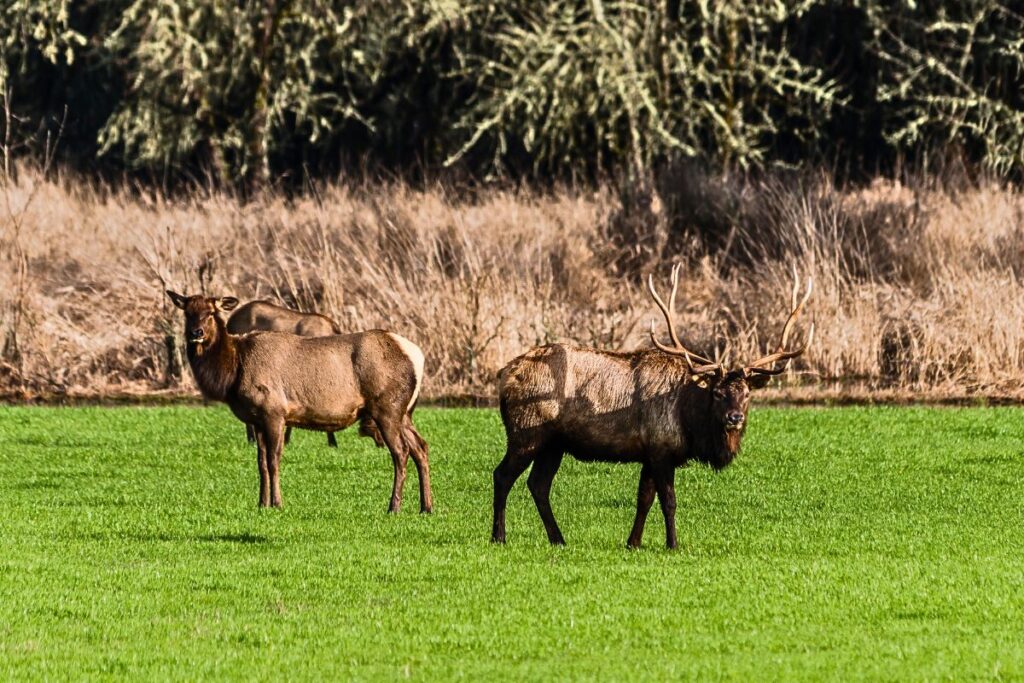Explore 14 stunning Animals in Mendocino National Forest with our hiking photo guide, including safety tips for respectful viewing.
Ready for a wild adventure? Lace up your boots and join us in Mendocino National Forest—a wildlife enthusiast’s paradise! Here, you’ll get the chance to play peekaboo with black bears, tip-toe around the turf of majestic mountain lions, and witness the ballet of bald eagles against the California sky.
Our recent romp through these 913,306 acres of untouched wilderness was nothing short of an epic nature documentary, and we’re here to share the reel.
We’ll guide you through the stomping grounds of the Roosevelt elk, show you where to spot the secretive gray foxes, and even give you a scoop on how to safely observe the slither of Northern Pacific rattlesnakes.
From the treetops hosting the elusive northern spotted owls to the riverbanks frequented by playful North American river otters, this guide is your ticket to the ultimate outdoor experience.
And we’ve got the tips to make sure your wildlife encounters are safe, respectful, and absolutely unforgettable. So, grab your binoculars and let’s get tracking!
Mammals
Mendocino National Forest is home to a diverse array of mammals. Some of the most prominent species you may encounter include:
Black Bears
These majestic creatures are the largest predators in the forest. Although they are not typically aggressive, it’s essential to maintain a safe distance and store food properly to avoid attracting them to your campsite.
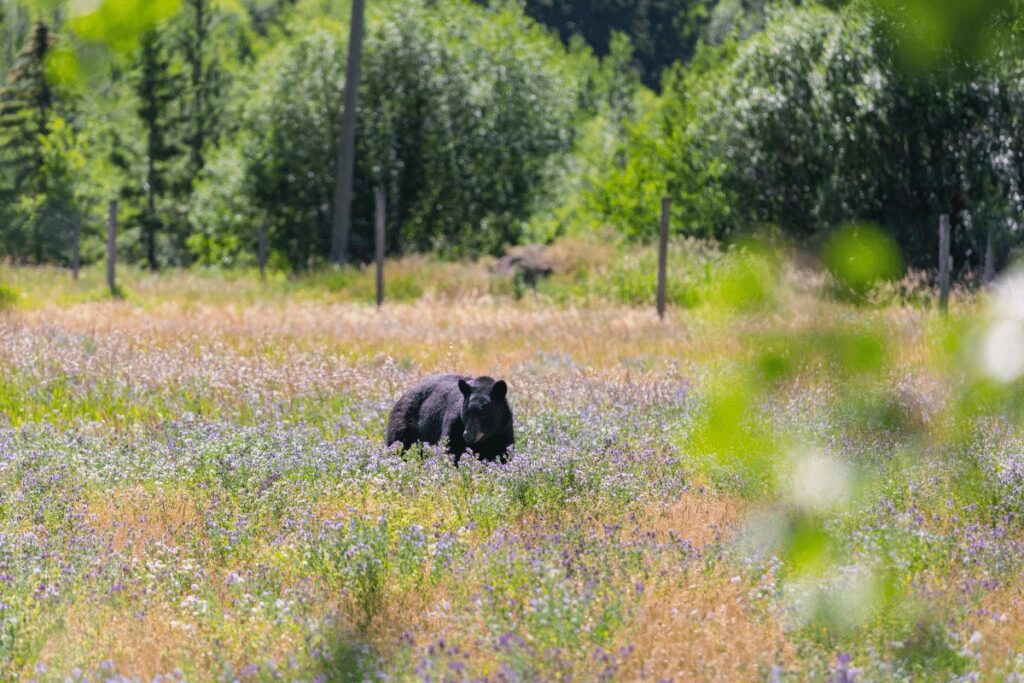
Black bears are commonly found in wooded areas with dense vegetation and near streams or rivers. They may also be seen near campgrounds, such as Atchison Campground and Pogie Point Campground, in search of food.
Black bears are omnivorous and primarily solitary, except for mothers with cubs. They typically forage in the early morning and late evening, consuming berries, nuts, insects, and occasionally small mammals or carrion.
Mountain Lions
Also known as cougars, these elusive cats inhabit the forest’s more remote areas. They generally avoid humans but can be dangerous if they feel threatened.
Mountain lions inhabit the more remote and rugged areas of the forest, often at higher elevations. They have been reported in the vicinity of Lake Pillsbury and Snow Mountain Wilderness.
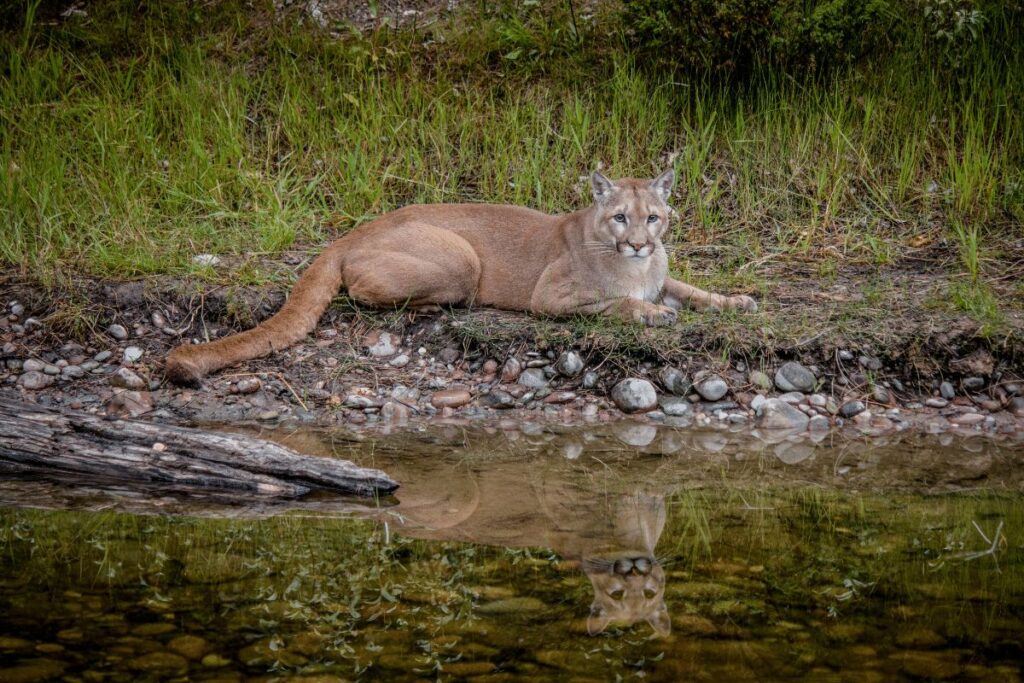
Mountain lions are solitary and primarily nocturnal, hunting deer and other ungulates. They are known for their stealth and are rarely seen by humans.
Mule Deer
The forest’s most abundant large herbivore, mule deer are easily recognized by their large ears and distinctive antlers. They are most active during dawn and dusk.
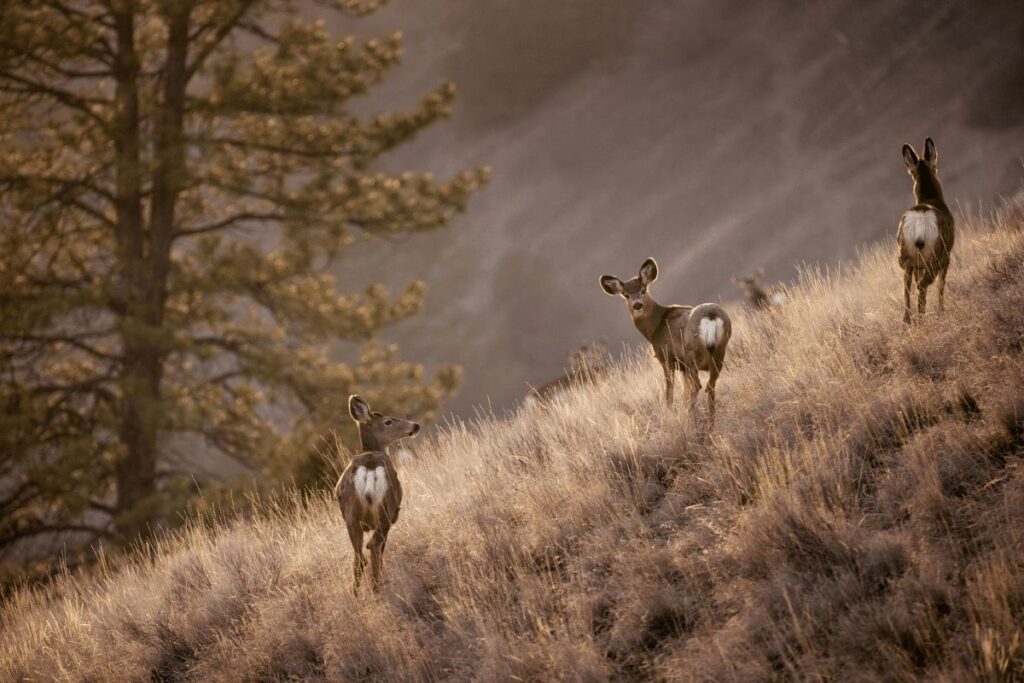
Mule deer are found throughout the forest, with higher concentrations in areas with abundant food sources, such as the Grindstone Ranger District and Upper Lake Ranger District.
Mule deer are herbivorous and crepuscular, feeding on a variety of vegetation, including shrubs, grasses, and forbs. They may form large herds during the winter months and can be seen grazing near meadows and clearings.
Gray Foxes
Smaller than their red counterparts, gray foxes are known for their ability to climb trees. They are primarily nocturnal and feed on a variety of small mammals, insects, and fruits.
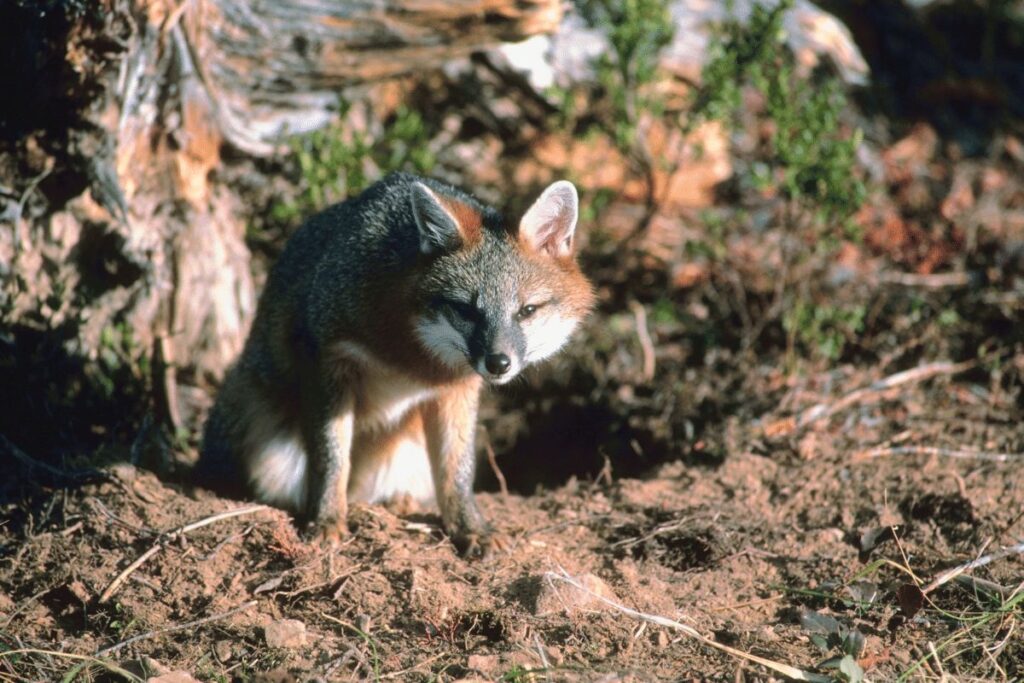
Gray foxes can be found in a range of habitats, from dense forests to open grasslands. They have been spotted around campgrounds like Lake Red Bluff Recreation Area and Hammerhorn Campground.
Gray foxes are omnivorous, feeding on small mammals, insects, and fruit. They are mainly nocturnal and known for their ability to climb trees to escape predators or search for food.
North American River Otters
Often found near rivers and lakes, these playful mammals are excellent swimmers and can often be seen frolicking in the water.
River otters are frequently found near water sources, such as Eel River, Stony Creek, and Lake Pillsbury.
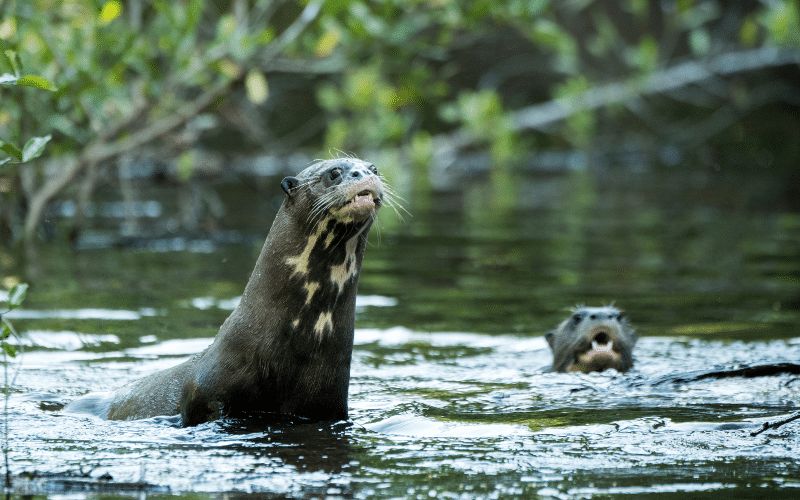
These playful mammals are social, forming family groups that hunt and play together. They feed primarily on fish, amphibians, and crustaceans and are often seen sliding on muddy banks or playing in the water.
Roosevelt Elk
Roosevelt elk, the largest subspecies of North American elk, can be found in various habitats throughout Mendocino National Forest, including meadows, grasslands, and mixed conifer forests.
They are particularly abundant in the northern sections of the forest, such as the Yolla Bolly-Middle Eel Wilderness and Covelo Ranger District.
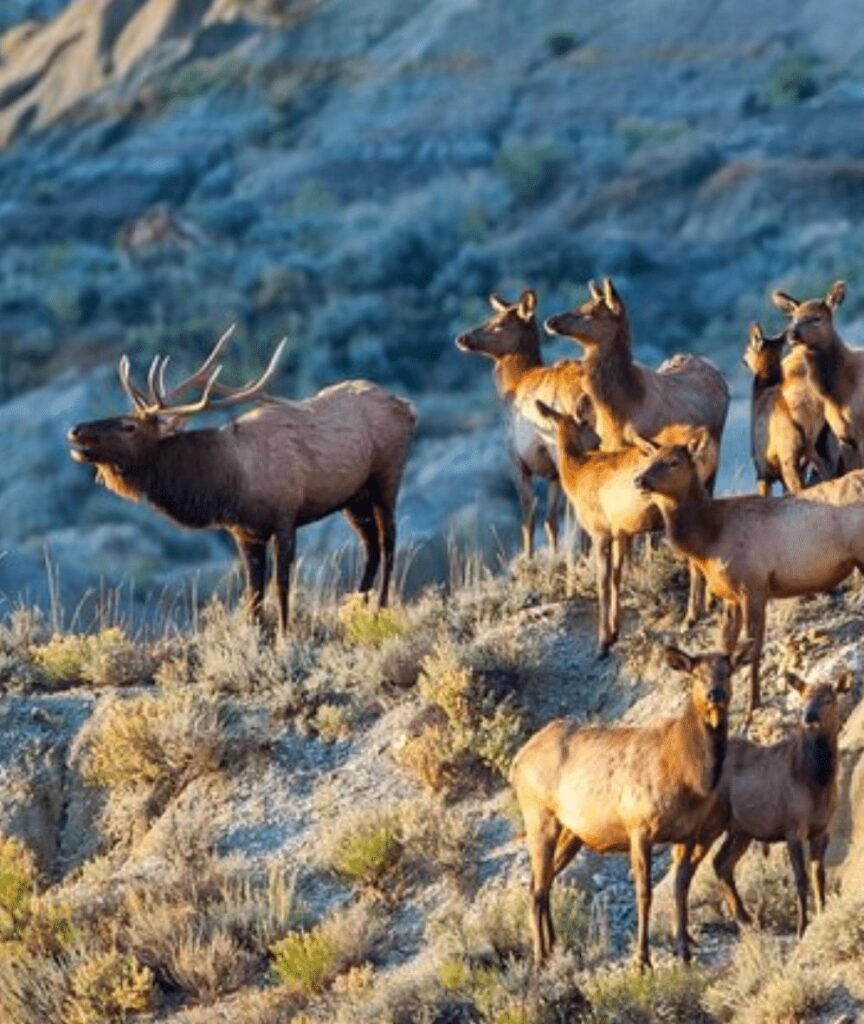
These large herbivores feed on a variety of grasses, forbs, and woody plants.
During the rutting season, which typically occurs from late August to early October, dominant male elk (bulls) engage in intense battles with rival bulls to establish dominance and secure mating rights.
This period is marked by the distinctive bugling calls of the males, which can be heard echoing through the forest.
Female elk (cows) give birth to a single calf, usually between late May and early June. The calves are born with spots that help camouflage them in the underbrush.
The mother is highly protective during this period, and it is essential to give elk plenty of space to avoid causing distress or inadvertently provoking an attack.
To increase your chances of spotting elk, plan your visit during the early morning or late evening hours when they are most active. Look for meadows, clearings, or other open areas where elk may come to feed.
Birds
The Mendocino National Forest is a haven for birdwatchers, with over 200 species recorded. Some highlights include:
Bald Eagles
These impressive raptors can be spotted soaring high above the forest, primarily around bodies of water where they hunt for fish.
Bald eagles are often seen near water sources, such as Lake Pillsbury, Eel River, and Stony Creek.
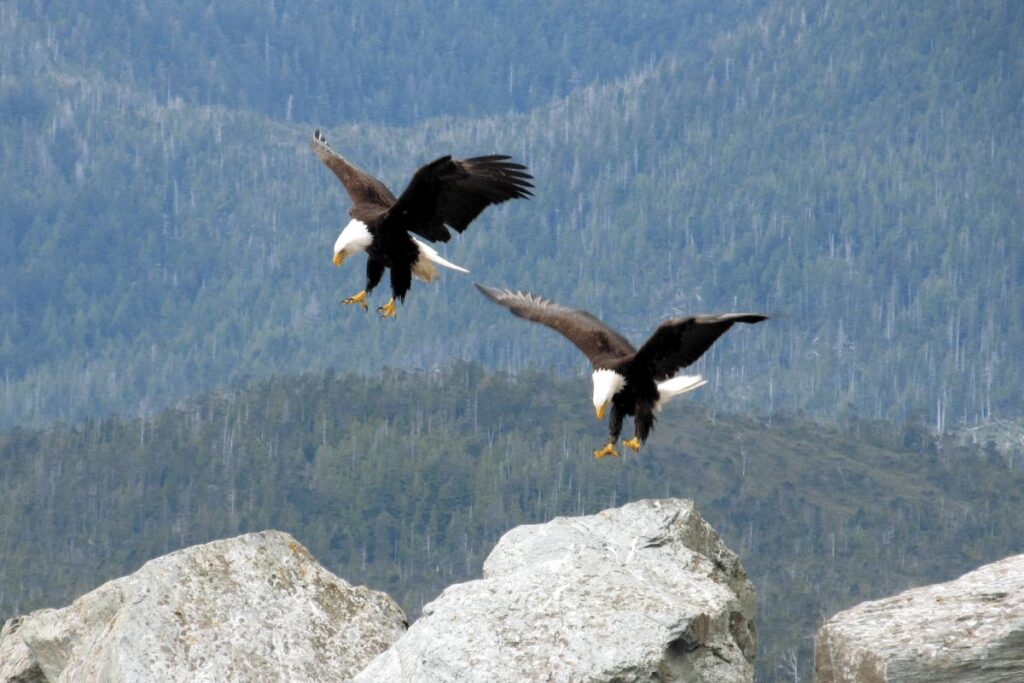
These large raptors are known for their impressive aerial displays and hunting prowess. They primarily feed on fish but will also consume small mammals, birds, and carrion.
Northern Spotted Owls
A threatened species, these nocturnal hunters reside in the old-growth forests of Mendocino National Forest. They are known for their large, dark eyes and distinctive “hooting” calls.
Northern spotted owls are found in old-growth forests, particularly in the Snow Mountain Wilderness and Yolla Bolly-Middle Eel Wilderness.
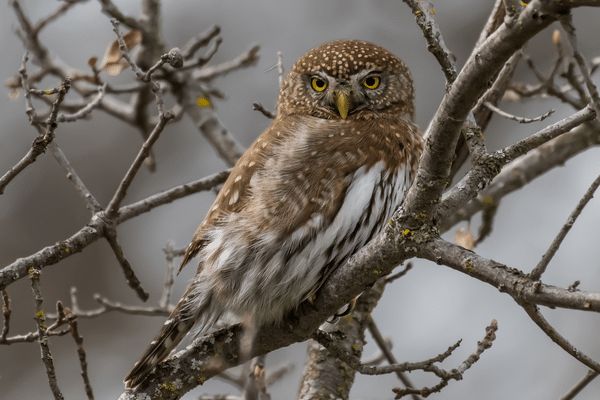
These nocturnal birds are territorial and typically remain in the same area throughout their lives. They feed on a variety of small mammals, including rodents and other small birds.
Pileated Woodpeckers
With their striking red crests, these large woodpeckers are hard to miss as they excavate cavities in dead trees to search for insects.
Pileated woodpeckers inhabit mature forests with an abundance of dead trees, such as those found in the Grindstone Ranger District and Upper Lake Ranger District.
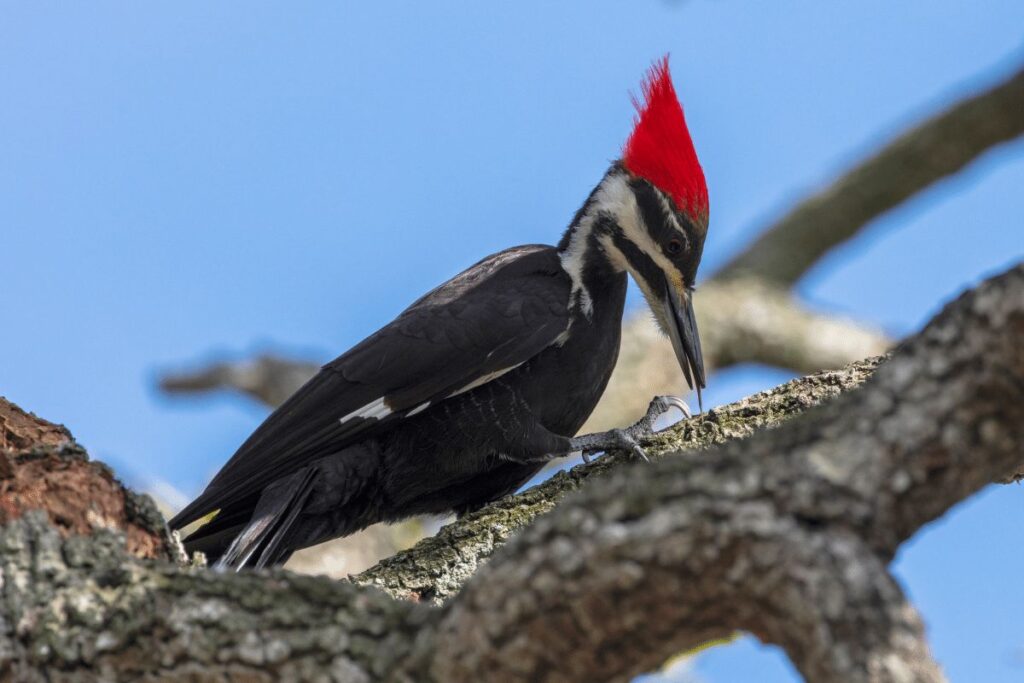
These large, striking birds create distinctive rectangular holes in dead trees as they search for insects, particularly carpenter ants and wood-boring beetles.
Western Bluebirds
These small, colorful birds are a treat to observe as they flit about in search of insects and berries.
Western bluebirds can be found in open woodlands, meadows, and around campgrounds like Fouts Springs Campground and Oak Flat Campground.
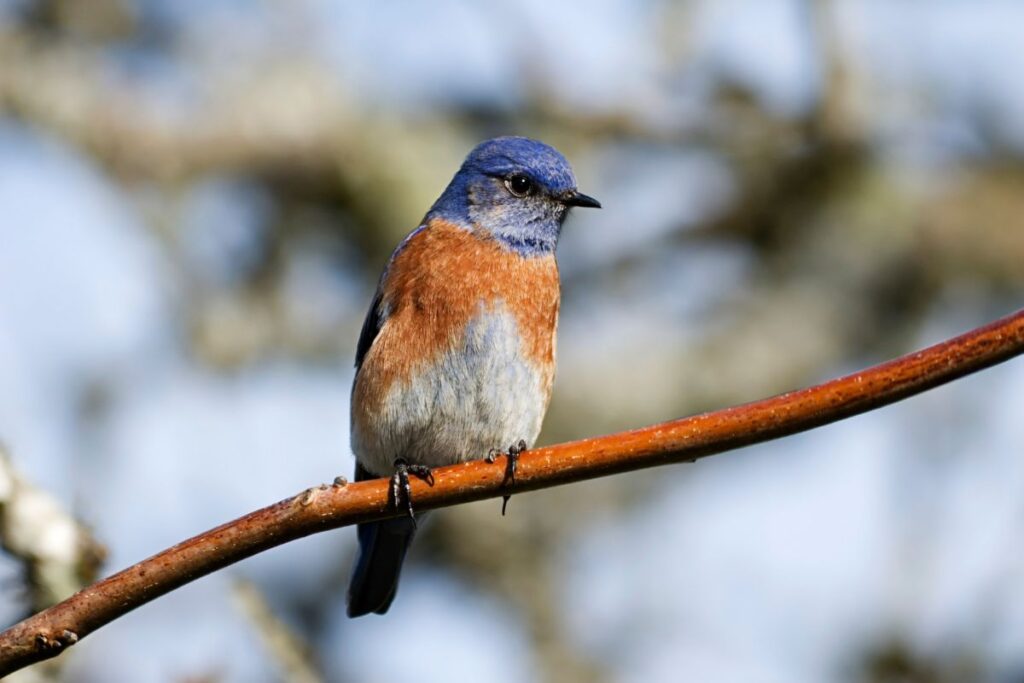
These small, colorful birds are insectivorous, feeding on a variety of insects, as well as berries and fruits. They are often seen perched on low branches or fences, swooping down to catch insects in flight.
Blue Grouse (Sooty Grouse)
Blue grouse, also known as sooty grouse, can be found in coniferous forests throughout Mendocino National Forest.
They are more commonly seen at higher elevations, such as the Snow Mountain Wilderness and the Yolla Bolly-Middle Eel Wilderness.
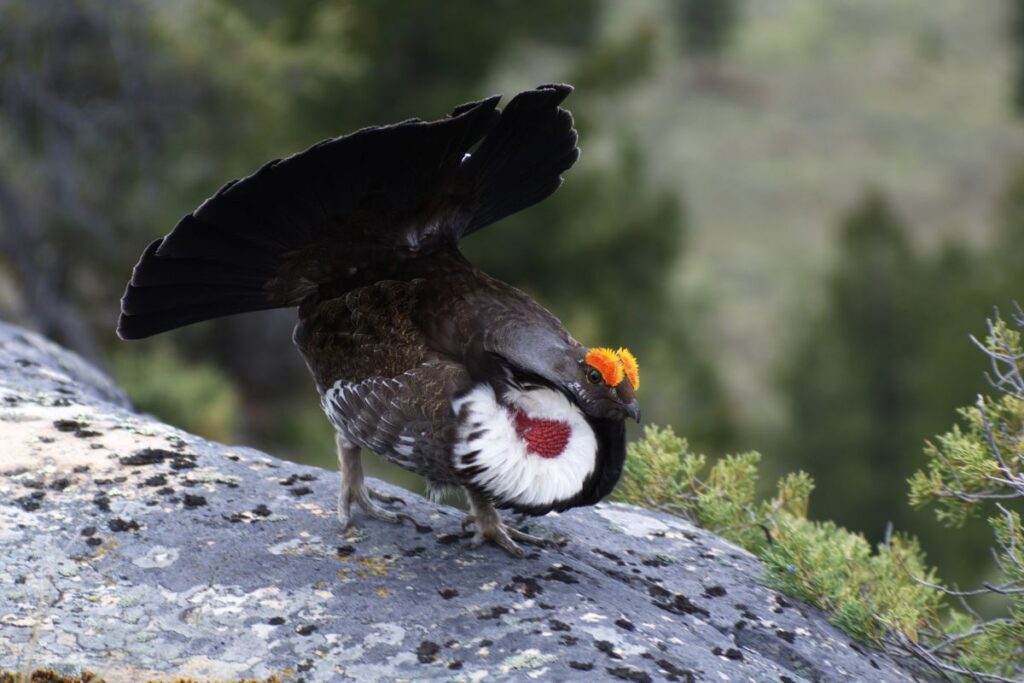
Blue grouse are primarily ground-dwelling birds but can also be found perching in trees. They are generally solitary, except during the breeding season. These birds are omnivorous, feeding on a variety of leaves, buds, fruits, and insects.
The mating season for blue grouse occurs during the spring, usually between April and June.
During this period, male grouse perform elaborate displays, including fanning their tails, puffing out their chests, and producing deep, resonant hooting calls to attract females.
These displays often take place on traditional “lek” sites, where multiple males gather to compete for mates.
While hiking through coniferous forests, keep an eye out for the birds on the ground or perched in trees. Use binoculars or a camera with a zoom lens to observe them from a distance without disturbing their natural behavior.
Reptiles and Amphibians
Mendocino National Forest’s ecosystems also support an array of reptiles and amphibians. Some examples include:
Western Pond Turtles
Found near lakes and ponds, these turtles are the only native freshwater turtle species in California.
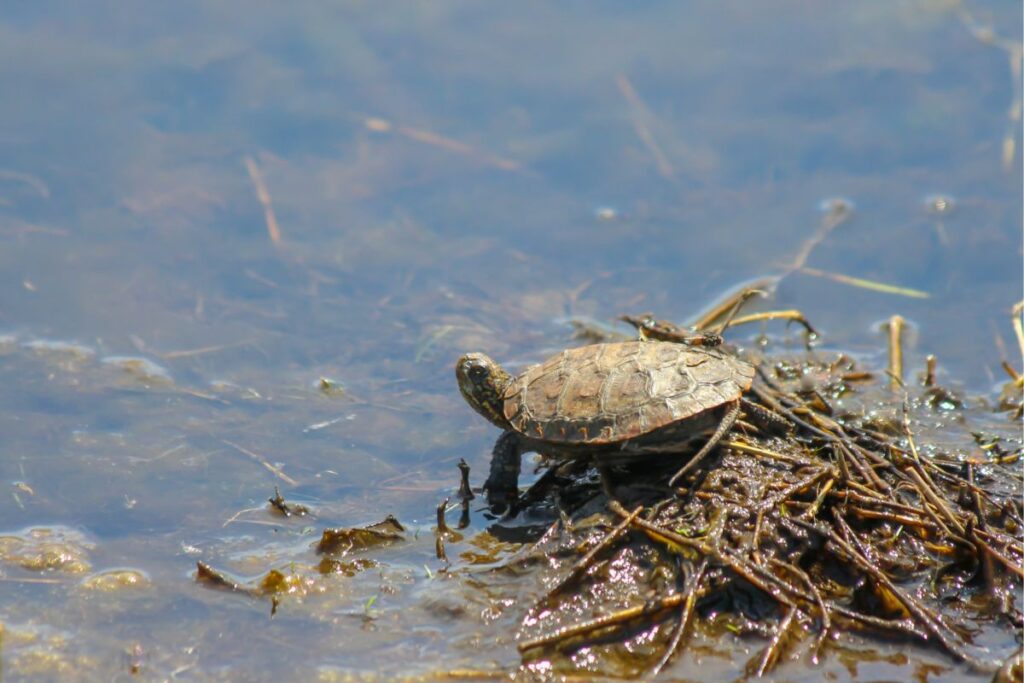
Western pond turtles can be found in and around water sources, such as Lake Pillsbury, Eel River, and Stony Creek.
These turtles are diurnal, spending much of their day basking in the sun on logs or rocks near the water’s edge. They are omnivorous, feeding on aquatic plants, insects, and small fish.
Northern Pacific Rattlesnakes
Although these venomous snakes are a rare sight, it’s essential to be cautious when hiking, as they are known to inhabit the region.
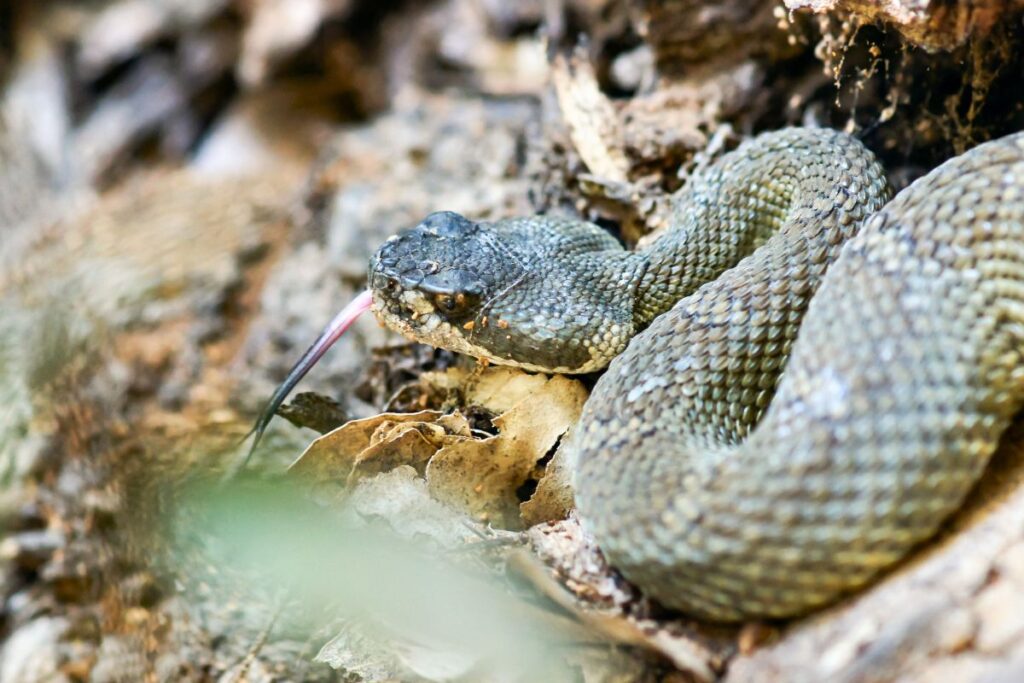
Northern Pacific rattlesnakes inhabit a variety of habitats, from grasslands to rocky slopes, but are more commonly found in drier areas like the Covelo Ranger District.
These venomous snakes are primarily nocturnal during the hot summer months, hunting for small mammals and birds. They are known for their distinctive rattle, which they use to warn potential predators.
California Newts
These small, brightly colored salamanders are found in moist, wooded areas, often near streams.
California newts are found in moist, wooded areas throughout the forest, particularly near streams and other water sources.
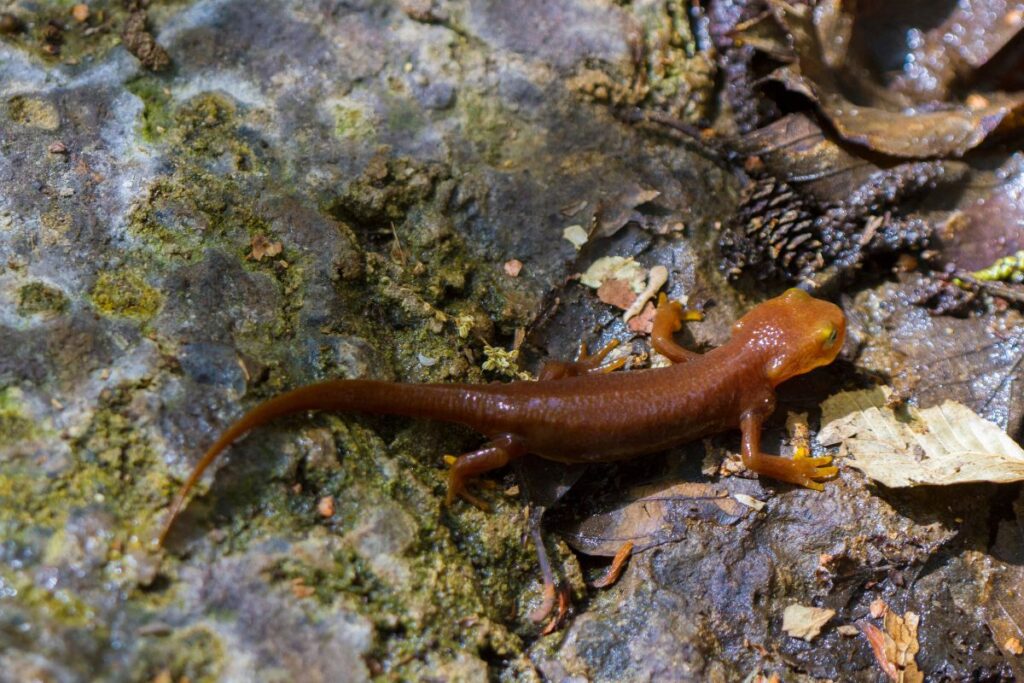
They can be spotted in the vicinity of campgrounds such as Plaskett Meadows Campground and Red Bluff Recreation Area.
These small, brightly colored salamanders are primarily nocturnal, feeding on insects, worms, and other small invertebrates. During the breeding season, they migrate to aquatic habitats to lay their eggs.
Best Practices for Wildlife Viewing
To ensure a safe and enjoyable experience for both you and the animals, it’s important to follow these guidelines when observing wildlife:
Keep a safe distance
Do not approach or attempt to feed wild animals. Use binoculars or a camera with a zoom lens to get a closer view.
Stay on designated trails
To minimize disturbance to wildlife and their habitats, stick to established trails and avoid wandering off the path.
Leave no trace
Pack out all trash and food waste, and minimize your impact on the environment.
Be patient and quiet
The best wildlife encounters often occur when you takethe time to observe quietly and patiently. Loud noises and sudden movements can scare animals away.
Respect nesting and breeding sites
Avoid disturbing nesting or breeding animals, as this can have severe consequences for their survival.
Follow local regulations
Obey posted signs and regulations, as they are designed to protect both wildlife and visitors.
Report any injured or sick animals
If you encounter an injured or sick animal, report it to the nearest park ranger or forest service office. Do not attempt to handle the animal yourself.
Guided Wildlife Tours and Education Programs:
For those interested in learning more about the wildlife of Mendocino National Forest, there are guided tours and education programs available:
Mendocino National Forest Visitor Center
The visitor center offers information on wildlife viewing opportunities, as well as interpretive displays on the area’s natural history.
Guided Wildlife Tours
Local outfitters and naturalist guides offer tours focusing on birdwatching, mammal tracking, and other wildlife experiences. These tours can provide expert insights and enhance your understanding of the forest’s inhabitants.
Junior Ranger Programs
For younger visitors, the Junior Ranger Program provides hands-on learning experiences and activities that foster a connection with the natural world.
Conclusion:
Mendocino National Forest is a treasure trove of biodiversity, providing visitors with countless opportunities to observe and appreciate the region’s unique wildlife.
By following best practices for wildlife viewing and participating in guided tours and education programs, you can deepen your understanding of these fascinating creatures and their habitats while contributing to their ongoing conservation.
By familiarizing yourself with the specific areas, behaviors, and campgrounds associated with the various species found in Mendocino National Forest, you can maximize your chances of encountering these fascinating animals in their natural habitat.
Always remember to practice responsible wildlife viewing to ensure the safety and well-being of both the animals and yourself.

